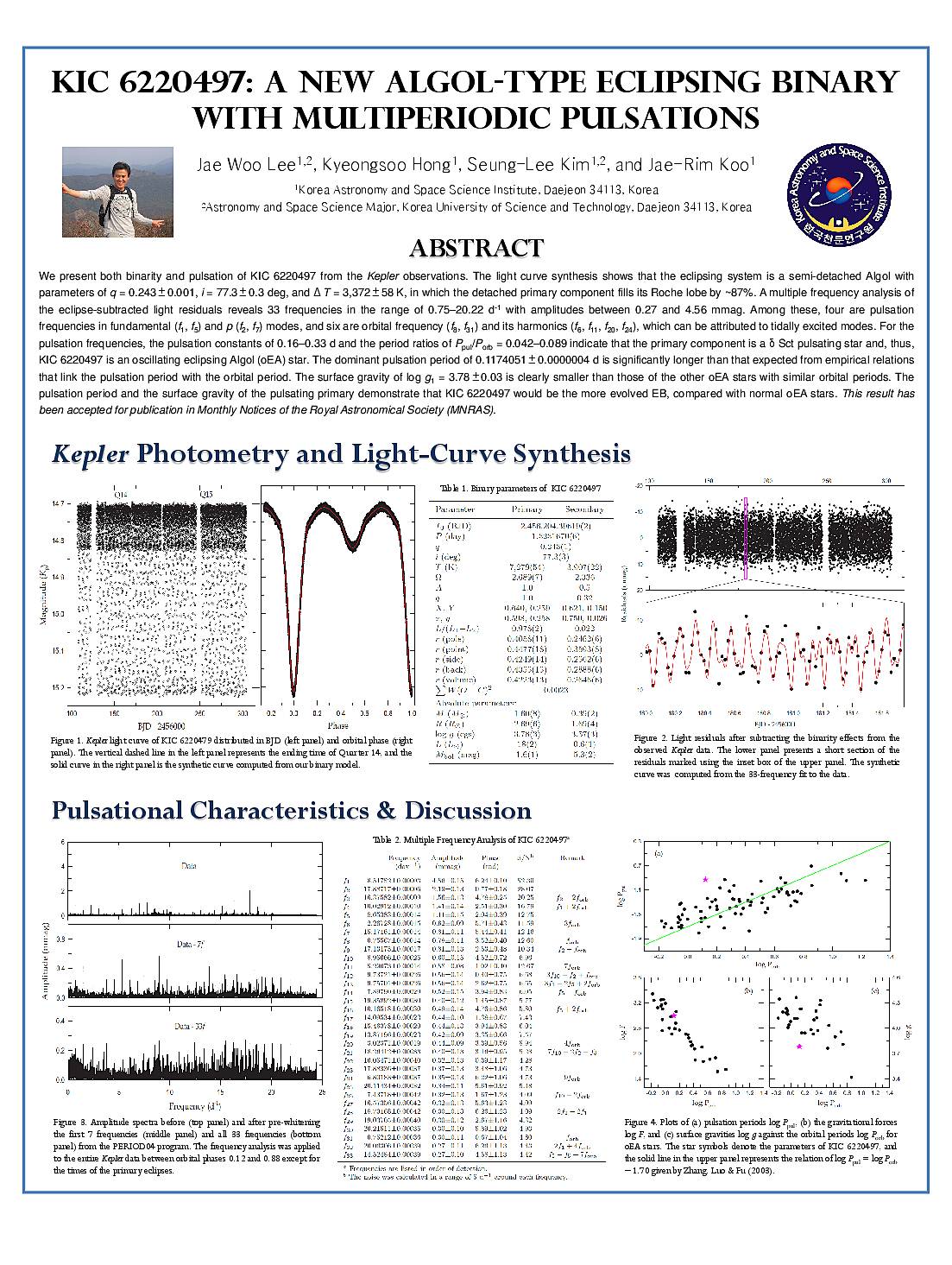Affiliation
Korea Astronomy and Space Science Institute
Main category
Natural Sciences (Astrophysics and Astrononmy)
Abstract
We present both binarity and pulsation of KIC 6220497 from the {\it Kepler} observations. The light curve synthesis shows that the eclipsing system is a semi-detached Algol with parameters of qq = 0.243±±0.001, ii = 77.3±±0.3 deg, and ΔTΔT = 3,372±±58 K, in which the detached primary component fills its Roche lobe by ∼∼87\%. A multiple frequency analysis of the eclipse-subtracted light residuals reveals 33 frequencies in the range of 0.75−−20.22 d−1−1 with amplitudes between 0.27 and 4.56 mmag. Among these, four are pulsation frequencies in fundamental (f1f1, f5f5) and pp (f2f2, f7f7) modes, and six are orbital frequency (f8f8, f31f31) and its harmonics (f6f6, f11f11, f20f20, f24f24), which can be attributed to tidally excited modes. For the pulsation frequencies, the pulsation constants of 0.16−−0.33 d and the period ratios of Ppul/PorbPpul/Porb = 0.042−−0.089 indicate that the primary component is a δδ Sct pulsating star and, thus, KIC 6220497 is an oscillating eclipsing Algol (oEA) star. The dominant pulsation period of 0.1174051±±0.0000004 d is significantly longer than that expected from empirical relations that link the pulsation period with the orbital period. The surface gravity of logg1logg1 = 3.78±±0.03 is clearly smaller than those of the other oEA stars with similar orbital periods. The pulsation period and the surface gravity of the pulsating primary demonstrate that KIC 6220497 would be the more evolved EB, compared with normal oEA stars.
Do you have problems viewing the pdf-file? Download poster
here
If the poster contains inappropriate content, please
report the poster. You will be redirected to the landing page.
